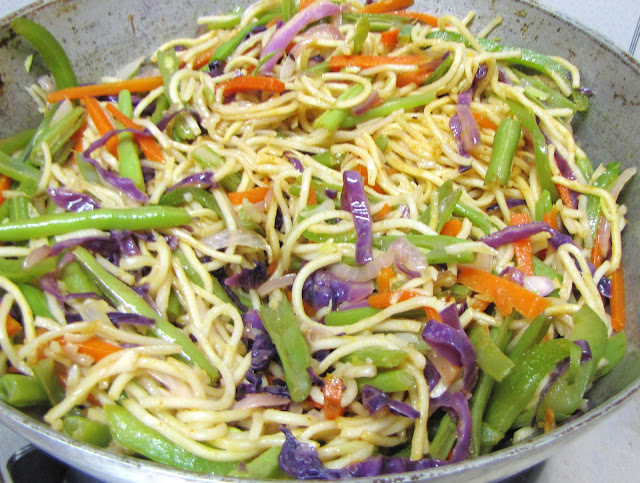Most of us know kozhaputtu with
kondakadalai is a super dooper combo from kerala. Puttu is also called Pittu. When we were on a trip to
Kerala my sister initiated this puttu venture; not only did we get the cook from the resort we stayed to demonstrate us puttu & kadalai curry preparation
but also bought each of us a puttu kuzha to try it out. For some reason, I
assumed puttu is a cumbersome dish and when I tried it myself I realized it was pretty
simple. I got puttu flour from store; the preparation of the flour itself would
be little complicated. You get many varieties of puttu flours; rice is the
usual one used but now you can see variants such as red rice, wheat, bajra,
corn, ragi and so on. This time I made corn puttu. Healthy, tasty and colorful :)
Kuzha Puttu making requires a special kind
of steamer called puttu kuzha which is shown in the picture below. It has a pot
below that holds water, above which the cylindrical part that contains puttu
flour is fixed so that the steam from the pot flows above to cook the flour to
get soft puttu. A small perforated disc shown in the picture forms the base of the
cylindrical part; the small lid with black handle is used to close the cylindrical
part while the black twig is used for pushing out the puttu cakes once they are
done.
Ingredients:
For Puttu:
1. Puttu flour - 1 cup
2. Salt as reuired
3. Water - 1/4 cup
4. Scrapped coconut – ½ cup
For Kadalai Curry:
1. Chickpeas - 1 cup
2. Onion - 1
3. Tomato - 1
4. Green chilies - 2
5. Garlic - 4 cloves
6. Ginger - 2" piece
7. Scrapped coconut – 2 tbsp
8. Cumin seeds - 1 tsp
9. Salt to taste
10. Red chili powder - 1 tsp
11. Coriander powder - 1 tsp
12. Oil - 2 tbsp
13. Coriander leaves - 2 tbsp finely chopped
14. Lemon - 1/2
Method:
Puttu:
Step 1: Add salt to the water and heat it until
warm.
Step 2: Now start boiling water in the puttu pot
and prepare flour in parallel. Drizzle few drops of warm salted water over the
flour and rub them between your palms. Keep adding drops of water until you get
to a stage in which, when you hold a fistful of puttu powder the shape should
hold on after releasing the fingers. At the same time don’t add too much water
to the flour and make it lumpy or sticky, it should be just a moist powder.
Step 3: Now take the cylindrical portion of the
puttu kuzha, drop the perforated disc inside to cover the base, with a lond
spoon drop a spoonful of scrapped coconut to spread evenly, then spoon in few
spoons of prepared flour and finally cover it with another spoon of scrapped
coconut. You can make two or three layers of puttu by filling flour and coconut
alternatively depending on the puttu kuzha’s length and the puttu length you
desire.
Step 4: Cove the puttu kuzha with its lid and fix
it over the steaming puttu pot. Cook for about 4 -10 minutes. Time depends on
the width and height of the puttu kuzha.
Step 5: Let it cool for a minute and then tilt
the kuzha and push out the puttu with the twig given. If the puttu is not
staying in shape it is either under cooked or there is less moisture than required.
If undercooked, the flour tastes and smells raw, in which case you can cook it
again. This way we can settle with a time estimate for forthcoming batches of
puttu.
Kadalai
Curry:
Step 1: Wash, soak the chickpeas overnight and
pressure cook them with salt.
Step 2: Grind together the chopped tomato, green
chilies, garlic and coconut.
Step 3: Heat oil in a pan, crackle cumin seeds
and sauté the finely chopped onion, add to it the tomato paste and sauté until
the oil seperates.
Step 4: Add chili powder, coriander powder, salt
and mix some water if the gravy is very thick.
Step 5: Stir in the cooked chickpeas, taste and
adjust salt/ spices/ consistency and cook in simmer for 2 minutes.
Step 6: Switch off the stove, squeeze juice of
half a lemon and mix well.
Step 7: Garnish with chopped coriander leaves and
serve hot with puttu.
TIPS:
* Though the black chickpeasis very commonly used
for kadalai curry white chickpeas is also prominent.
* Papadam is usually served with puttu & kadalai curry though I did not make it.
* Papadam is usually served with puttu & kadalai curry though I did not make it.
* Another typical tradition of serving puttu is
accompanying it with ripe banana and sugar.
*The picture above is the sweet puttu which I got by adding chopped banana, sugar and some ghee to the puttu; my husband said it tasted like prasadam, we loved it.


















































